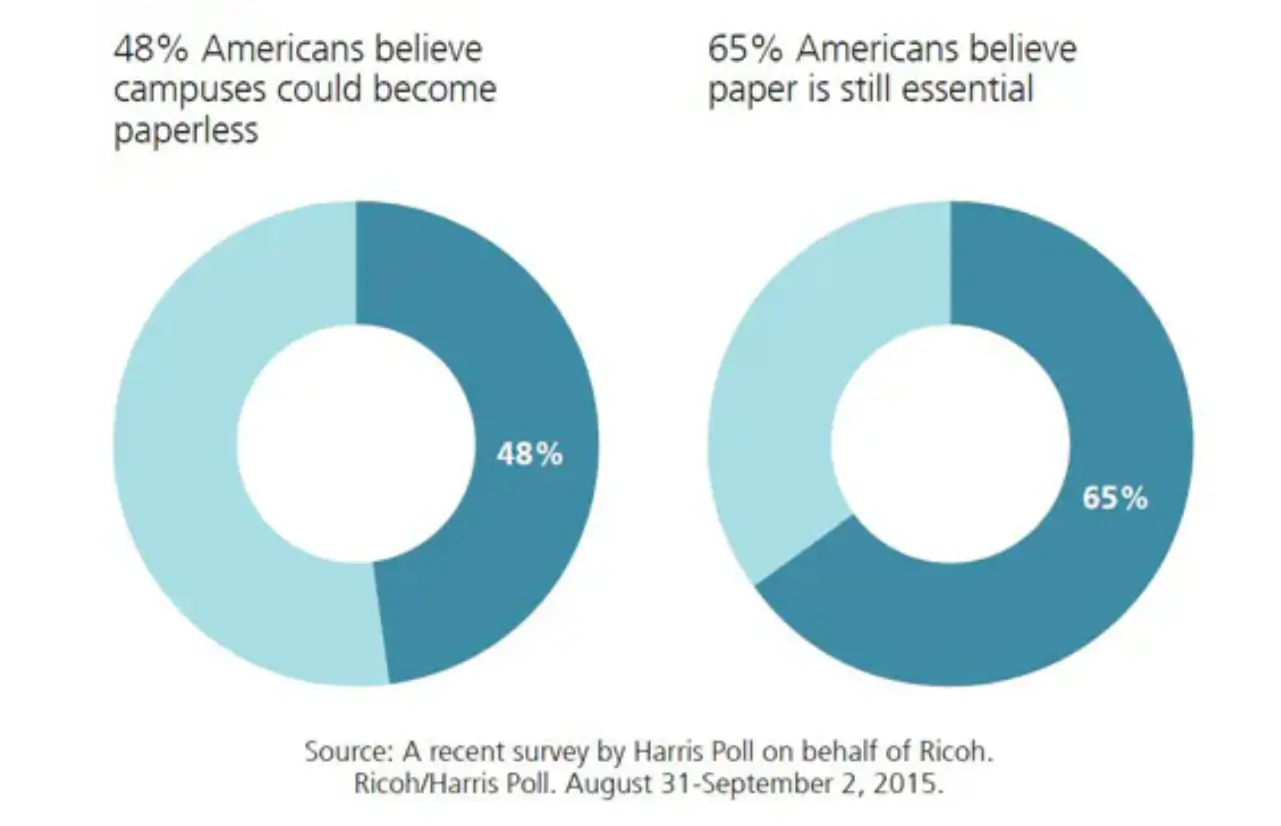Will there ever be a 100 percent paperless student?
In the face of rising costs and increasingly tech-savvy students, is being “paperless” a reality in higher education?
In a recent survey by Harris Poll on behalf of Ricoh, two in three Americans said college students couldn’t function without using paper daily¹ On the other hand, the same survey found that 48 percent of respondents expect universities to go paperless within a few years. Given that split, what does the future hold for higher education? And is the idea of a 100% paper student going to become reality?

Clearly, students generate enormous amounts of data on the administrative side throughout their college careers. Much of that is still stored on paper at many institutions, although that is changing. Elsewhere on campus, in contrast — in classrooms, libraries, labs and residence halls – students at colleges and universities are moving away from paper. They are embracing e-textbooks, digital whiteboards, unified communications systems (UCS), widespread use of tablets and laptops, smartphones in the classroom, learning management systems that stress electronic delivery of content, and more.
So what are the perceptions around where higher education students stand today in how they learn, and how they interact with administrative resources?
In short, paper will continue to have a place in this new world of learning. However, smart IT leaders and decision makers will make strategic choices about where paper still makes sense and where it doesn’t. They will choose how their institution can most effectively capture, manage, distribute and transform information across all of its many departments, functions and users.
With college costs continuing to escalate, and colleges and universities increasingly pressed to find new revenue streams to keep the lights on, reducing paper is seen not only as a way for colleges and universities to please students, but also means of keeping expenses down, a key concern for many universities.
The decision to go paperless – and to what extent – is set to have far-reaching effects on how universities, students, and information interact, and how much that flow of information costs those involved. Making those calls can be difficult, requiring input from students, faculty, administrators, and outside consultants, such as decision-making peers at similar institutions of higher education, and third-party consultants who have helped guide universities through these kinds of changes.

Source: RICOH USA
